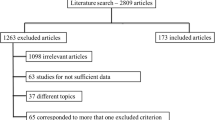Abstract
Background: Multiple-phase helical computed tomography (CT) has been regarded as the method of choice in the evaluation of patients with hepatocellular carcinoma (HCC) treated by nonsurgical procedures. The aim of this article was to report our experience in the assessment of nodular and parenchymal changes recognizable after various percutaneous ablation therapies.
Methods: We reviewed the studies of 116 consecutive patients with HCC treated with multisession percutaneous ethanol injection (56 patients, 98 nodules), single-session percutaneous ethanol injection (14 patients, 31 nodules), radiofrequency thermal ablation (32 patients, 48 nodules), and interstitial laser photocoagulation (14 patients, 25 nodules). CT had been performed 3–28 days after the last session (mean = 18 days) with unenhanced helical acquisition and with contrast-enhanced double- or triple-phase helical acquisition.
Results: Persisting neoplastic tissue was identified within 54.5% of the nodules. It was located centrally in 4.5% of these nodules, peripherally in 11%, and eccentrically in 84.5%, and its shape was crescent in 58%, globular in 24.5%, and other in 16%. On arterial phase scans, viable tumor was hyperdense in 97% of the lesions and isodense in 3%; on portal phase scans, the tumor was hyperdense in 20%, isodense in 28%, and hypodense in 52%; on delayed phase scans, the tumor was consistently hypodense. Tumor necrosis was always hypodense on contrast-enhanced scans. On unenhanced images, 7.4% of the nodules were undetectable. Nodule diameter appeared as unchanged in 53% of the nodules and as larger in 47%; its shape was unchanged in 54% and modified in 46%; its margins were unchanged in 36% and modified in 64%. A rim of granulation tissue was detected around 15% of the nodules, and a perilesional transient attenuation difference was detected in 21%. Perihepatic effusion was seen in 13% of the patients, segmental biliary duct dilation and local atrophy each in 9%, arterioportal fistula in 6%, portal vein thrombosis, subcapsular collection and pleural effusion each in 7%, hepatic infarction in 5%, and inferior vena cava thrombosis in 2%.
Conclusion: Percutaneous ablation of HCC may cause several changes. Knowledge of their CT appearance is mandatory to correctly assess and manage this tumor. RID="" ID="" <E5>Correspondence to:</E5> O. Catalano
Similar content being viewed by others
Author information
Authors and Affiliations
Additional information
Received: 6 April 2000/Accepted: 3 May 2000
Rights and permissions
About this article
Cite this article
Catalano, O., Esposito, M., Nunziata, A. et al. Multiphase helical CT findings after percutaneous ablation procedures for hepatocellular carcinoma. Abdom Imaging 25, 607–614 (2000). https://doi.org/10.1007/s002610000076
Published:
Issue Date:
DOI: https://doi.org/10.1007/s002610000076




